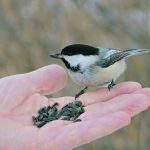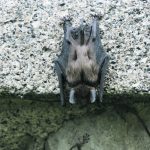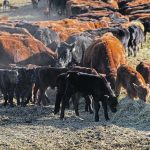The more you learn about viral and bacterial threats to livestock, the more you wonder how we can effectively protect the sector. Maybe we need to view big disease events as waves rather than singular events — and if we know the next wave is coming, how prepared are we? I asked several people who […] Read more
Tag Archives Disease

Humans give more viruses to animals than they give us
People and animals are hosts to innumerable microbes that can jump to another species through close contact
WASHINGTON (Reuters) — Some of the deadliest diseases to stalk humankind have come from pathogens that jumped from animals to people. The virus that causes AIDS, for example, crossed over from chimpanzees. And many experts believe the virus that caused the COVID-19 pandemic flowed from bats. But, as a new study shows, this exchange has […] Read more
Sheep testing urged to protect Bighorn
MEDICINE HAT — A wild sheep preservation group seeks better education about a minor domestic sheep ailment that can prove fatal to their Bighorn cousins. A Mycoplasma ovipneumoniae, or Movi, outbreak west of Diamond Valley, Alta., in 2023 resulted in 18 Bighorn sheep that were either found dead or needed to be culled to prevent […] Read more

Bat disease could boost Alberta pests
The death rate among bats could have corresponding effects on insect pests. Bats feed on wheat midge and diamondback moths, said Paul Muyres, agronomist with Solid Ground Solutions.

Early scouting urged for blackleg
However, it can sometimes be difficult for growers to tell the difference between blackleg and root rot in June and July
Canola growers and agronomists often look for blackleg in August or September because it’s a good time to spot signs of the fungal disease. However, Justine Cornelson, an agronomist with the Canola Council of Canada, said growers should also scout for blackleg earlier in the season. “If you’re only scouting for blackleg prior to harvest, […] Read more
TB found in Alberta cow
An Alberta farm has been quarantined after a positive case of tuberculosis was detected in a cow shipped to the United States for slaughter. The Canadian Food Inspection Agency is investigating and the index herd will be tested, said Rob McNabb of the Canadian Cattlemen’s Association. “They detected some lesions and cultured it and then […] Read more

VIDEO: The damaged harvest
Jan Knight hates being the bearer of bad news. However, that’s going to be a big part of her job for the next few months as she informs farmers that their crops are likely to be downgraded because of disease and weather damage. “I don’t want to be a ‘Debbie Downer,’ but there’s nothing really […] Read more

Deadly disease threatens pulses
Agronomists say conditions are ideal for the development of a variety of crop diseases and one has already become a headache for some pulse growers. Saskatchewan Pulse Growers has been inundated with calls from agronomists and farmers reporting cases of aphanomyces, a devastating root rot disease in peas and lentils. Sherrilyn Phelps, agronomy and seed […] Read more

More corn acres could hike fusarium in cereals
As acreage planted to corn increases in Alberta, so will the risk of fusarium infection to cereal crops, says a crop pathologist. Michael Harding of Alberta Agriculture said corn is a good host for fusarium graminearum, but that crop doesn’t usually see yield loss as a result of infection. It means there is no incentive […] Read more

Blood test for swamp fever essential
Horse owners should take the risk of equine infectious anemia seriously, says a veterinary researcher. “When a horse is infected, it is infected for life,” said Dr. Sara Higgins of the Western College of Veterinary Medicine in Saskatoon. Also known as swamp fever, it is a federally reportable disease. The number of detected cases has […] Read more




